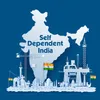Road to recovery: How the Indian manufacturing sector is marking remarkable resilience
For the manufacturing sector, the pandemic was a blessing in disguise. In a way, the new vision for India’s economy can be attained by putting the manufacturing sector at the core of the digital, global, and green future.
The COVID-19 pandemic was a heavy blow to the already struggling world economy. Economic activity around the world plunged to one of the lowest levels, people lost jobs, and the dynamics of businesses came to a standstill.
The pandemic exposed the fragility of the manufacturing sector, which was brought in by over-dependence on select geographies for the supply chain. But every crisis brings its own set of challenges and opportunities.
For the manufacturing sector, the pandemic was a blessing in disguise as it boosted the local supply chain. In a way, the new vision for our economy can be attained by putting the manufacturing sector at the core of the digital, global, and green future.
The resilience shown by the manufacturing sector
Historically, a strong industrial base provides the foundations needed to create a prosperous society. It is the manufacturing sector — with its versatile and futuristic aspects — that stands ready to rebuild the sinking ship of the global economy.
Despite the pandemic, the sector stepped up to the challenge and focussed on adapting operating models, and at the same time, devising future strategies in line with the changing global dynamics.
Talking specifically, India’s manufacturing sector — which was impacted by a labour shortage and lockdowns in the early days of the pandemic — has found strength in several government policies introduced to move towards the growth path.
Several industries started to reconfigure their sourcing and manufacturing footprints and further capitalise on India’s advantages in raw materials, skills, and entrepreneurship to build an ecosystem that supports a multitiered industry ready to take on global manufacturing.
Road to recovery for manufacturing
The key factors leading to the recovery of the Indian manufacturing sector can be broadly defined in two categories.
Firstly, owing to the flexible nature of the Indian economy, the manufacturing sector can expedite the recovery path, and play a pivotal role in the economic growth of the country. Combating all the bottlenecks and marking new benchmarks, the sector can be counted as the new growth driver for strengthening India’s global stance.
Most notably, several companies are seeking alternative sources of supply and ensuring that the labour force can continue to operate efficiently.
Secondly, pursuing innovation-led growth is key. With the manufacturing sector rapidly adapting its strategies to address both the challenges and the opportunities, it is further enhancing the role of innovation-led growth prospects.
Through this, the sector is embracing the need for new digital skills that can support both the adoption of technology and the way it is deployed to rethink existing systems and processes, therefore, leading to employment generation.
All these factors collectively are contributing to enabling an environment that is ready for the new international trading.
Conclusion
The biggest lesson learnt from the COVID-19 pandemic is that compounded global supply chains can grind to a halt by even a single broken chain. However, local ecosystems can boost innovation-led development, and build newer ways to overcome any unforeseen hurdles in new and existing markets.
Today, India has the golden opportunity of ramping up the manufacturing sector. By focussing on accelerating the digitalisation of the FVC, securing alternative supply chains, and new operating models, and expanding the sales-channel to grow market share, industries can push the reset button for driving growth.
As companies start to prepare for a post-pandemic world, initiatives like strategic resource reallocation, investments, competitive raw material costs, and robust government policies will help India’s manufacturing sector make up for lost ground.
Edited by Suman Singh
(Disclaimer: The views and opinions expressed in this article are those of the author and do not necessarily reflect the views of YourStory.)








